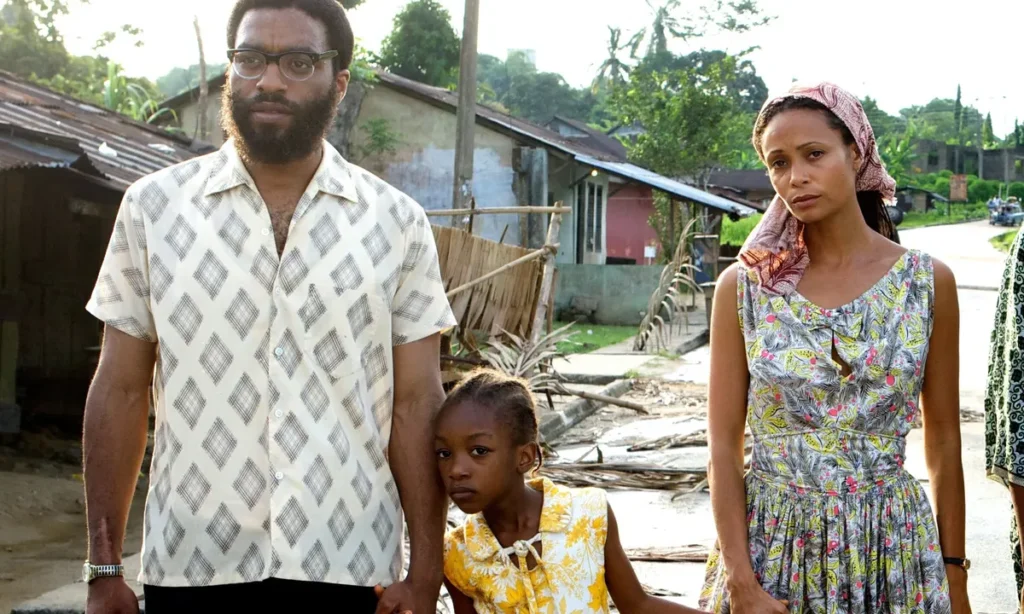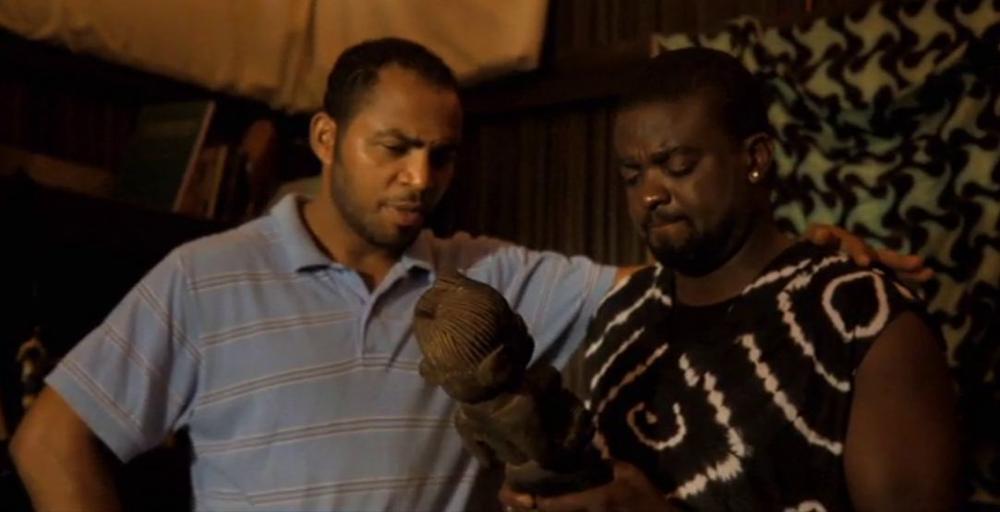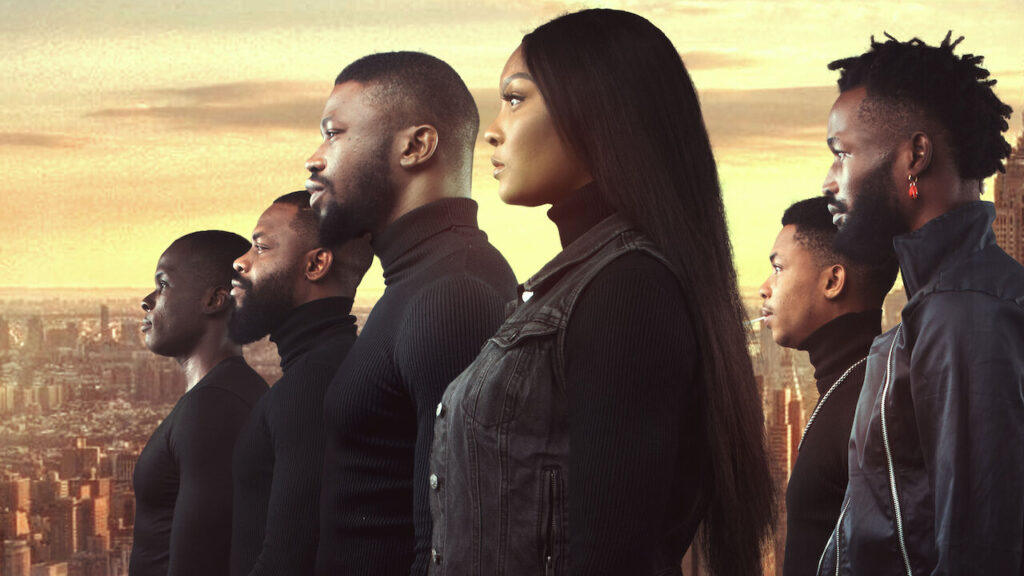(Photo “King of Boys,” 2018)
Since its modest beginnings, Nigerian cinema has carved out a unique space, reflecting the country’s rich tapestry of creativity and culture. However, as the film industry evolves, so does the debate surrounding its identity.
In recent years, a continuous conversation within the Nigerian filmmaking community has revolved around defining Nollywood. Some simply label it as a filmmaking genre, while others perceive it as the structure of the Nigerian film industry. Notably, a few Nigerian filmmakers, such as Mo Abudu, the founder of Ebonylife Studios, have openly rejected the term “Nollywood.” In an interview with Deadline, Mo Abudu stated, “I hate the word Nollywood. The term Nollywood itself is a bad genre of filmmaking.”
Abudu’s statement highlights the validation some Nigerian filmmakers seek when their work is distinguished from a “Nollywood movie.” The subtle message in such a compliment implies that “most Nollywood films are subpar, but here’s one that’s exceptional.”
While filmmakers have the right to choose their identity and reject unwelcome labels, these distinctions matter less to their audiences. Notably, even an adaptation like Chimamanda Ngozi Adichie’s “Half of a Yellow Sun” (2013), primarily a British production with international and Hollywood stars, was not categorically differentiated, not even by the media.

This lack of distinction is understandable, as “Half of a Yellow Sun,” despite being an international production, was filmed in Nigeria and featured many Nollywood stars, the same actors seen in countless other Nigerian films. To the audience, it was simply Nollywood, synonymous with the film industry in Nigeria.
Nigerian films were not always termed “Nollywood.” The word was first used in a New York Times article in 2002, tracing the industry’s roots to the home video tradition, specifically “Living in Bondage,” the 1992 Igbo-language film that inspired filmmakers to create direct-to-VHS tape films. Nigerian filmmaking existed long before this, dating back to the 1920s, with various epochs and innovations leading to the 1990s’ home video era.
The home video films were distinctive, characterized by social realism portraying everyday Nigerian life. Stories were drawn from the streets, featuring recognizable neighbors and family members, and addressing relatable situations and immediate concerns. Archetypal stories included tales of maltreated widows, young men burdened by family responsibilities and desperate for wealth, conflicts between wicked mothers-in-law and persecuted daughters-in-law, and romances involving couples navigating class, religious, or tribal differences. Supernatural thrillers drew inspiration from local folklore passed down through generations.
At the core, these stories conveyed Christian morality, often depicting good triumphing over evil. Despite their technical and storytelling challenges, these films were beloved by Nigerians and launched enduring stars, unmatched by their younger counterparts. An identity crisis was not a concern.
As the industry expanded, new talent brought innovation, reshaping the industry. Technical improvements in films became evident. Key milestones in this transformation, including Kunle Afolayan’s “The Figurine” (2009) and Stephanie Okereke-Linus’ “Through The Glass” (2008), marked a shift. Before these films, Nigerian cinemas predominantly screened Hollywood productions.

Films seeking cinema releases naturally aimed to meet Hollywood’s technical standards, which were considered the benchmark. While Nollywood’s direct-to-video releases were often dismissed as “low art” due to budget constraints and technical limitations, they laid the industry’s foundation. Despite their flaws, these films resonated deeply with Nigerian audiences due to their authenticity. Many contemporary filmmakers, raised on Hollywood films and often critical of Nollywood, sought to revolutionize the industry, embracing the identity of the “New Nollywood.”
With ambitious goals, the “New Nollywood” often emulated Hollywood, leading to a proliferation of derivative romantic comedies and a shift in storytelling formats. Actress and filmmaker Genevieve Nnaji criticized this trend in a 2018 interview with The Africa Report, emphasizing the need to change not just the stories but also the storytelling itself.
Old Nollywood films centered on relatable subject matter, while the “New Nollywood” embraced aspirational storytelling, focusing on the lives of the elite. Consequently, the cultural uniqueness and unapologetic Nigerian identity that propelled Nollywood to international recognition faded. There appeared to be no remedy in sight.
However, recent developments suggest a resurgence of culturally conscious storytelling in Nollywood, with more mainstream films now in indigenous languages.
Streaming platforms are vying for groundbreaking productions. Filmmakers like Kunle Afolayan, deeply rooted in culturally resonant stories, still attract audiences. Yet, the appeal of epochal tales seems to lie more in their ability to excite audiences than their cultural resonance. Fan service, a hallmark of Hollywood films, has become prevalent, with films incorporating gimmicky Hollywood action sequences. In contrast, old Nollywood thrived on relatability and emotional resonance, making even simple stories resonate deeply with Nigerians.
The Hollywood influence is most apparent in attempts to remake classic Nollywood films. Capitalizing on nostalgia, new Nollywood producers have revisited these classics primarily for their commercial potential. However, without an understanding of what made the originals remarkable, these remakes tend to overcomplicate plots, influenced by Hollywood storytelling techniques.

For instance, the 2020 remake of Amaka Igwe’s 1994 “Rattlesnake” — “Rattlesnake: The Ahanna Story,” directed by Ramsey Nouah — lost the original’s heartwarming reflection on parental and societal neglect, devolving into a convoluted mix of social commentary, heist elements, and revenge themes. Similarly, the 2023 reboot of Zeb Ejiro’s 1994 “Domitila” strayed from its core theme of a first daughter’s struggles, opting for a muddled narrative involving undercover agents and sex trafficking. Improved screenplays could have salvaged these adaptations.
Nollywood aspires to attain global recognition akin to Bollywood and the South Korean film industry. Both have transcended language barriers and captured international audiences with their unique film languages, distinct from Hollywood and other global cinema. This distinctiveness is their allure, drawing audiences worldwide.
To achieve global success, Nollywood should learn from these industries. While it is unreasonable to demand a uniform filmmaking style from today’s Nollywood filmmakers, they should tap into their diverse influences. A common thread can be found in telling authentic Nigerian stories that resonate with Nigerian life and culture.
Notably, Kemi Adetiba’s “King of Boys,” a political thriller delving into Nigeria’s underworld, shattered misconceptions that audiences only craved aspirational comedies. The film, influenced by “The Godfather” but firmly grounded in its own world, became the second highest-grossing Nollywood film of 2018, underscoring the audience’s appetite for original stories.

Internationally, C.J Obasi’s Sundance-winning “Mami Wata,” an allegory based on the titular river goddess of West Africa, is touring festivals and screening globally. Similarly, “Eyimofe,” a contemplative tale on immigration by the Esiri brothers, garnered acclaim, including inclusion in the Criterion Collection. These films demonstrate the potential of well-crafted original stories reflecting Nigerian life and culture.
If Nigerian stories are celebrated for their originality, innovative storytelling, and brilliance, filmmakers may find less need to disassociate themselves from Nollywood. The challenge lies in altering the perception of Nollywood, historically regarded as low art with mediocre films. Genuine artists aspire to distance themselves from mediocrity and inferiority.
A more worthwhile endeavor involves filmmakers collectively working to change this perception. Ultimately, the term “Nollywood” is just a name; its significance lies in representing Nigeria’s cinematic legacy.
Nollywood faces a crossroads, with its rich history on one side and the allure of global cinema on the other. It falls upon the current generation of filmmakers to shape the legacy they wish to leave behind. By embracing their roots and pushing for innovation, they can redefine Nollywood for the next generation.

As a Nigerian filmmaker deeply rooted in our cinematic heritage, the term “Nollywood” encapsulates our rich storytelling journey. While the debate on its identity continues, our focus remains clear: crafting original, culturally resonant narratives that captivate both local and global audiences. Embracing our roots while pursuing innovation is key to redefining the legacy of our industry. Let’s weave authentic Nigerian tales, fostering a new era of cinematic brilliance. For me, the term Nollywood opens doors. What I chose to do when I’m in the room determines whether the term is a force for good or evil. And so far, I feel I’ve done a lot of good 😎